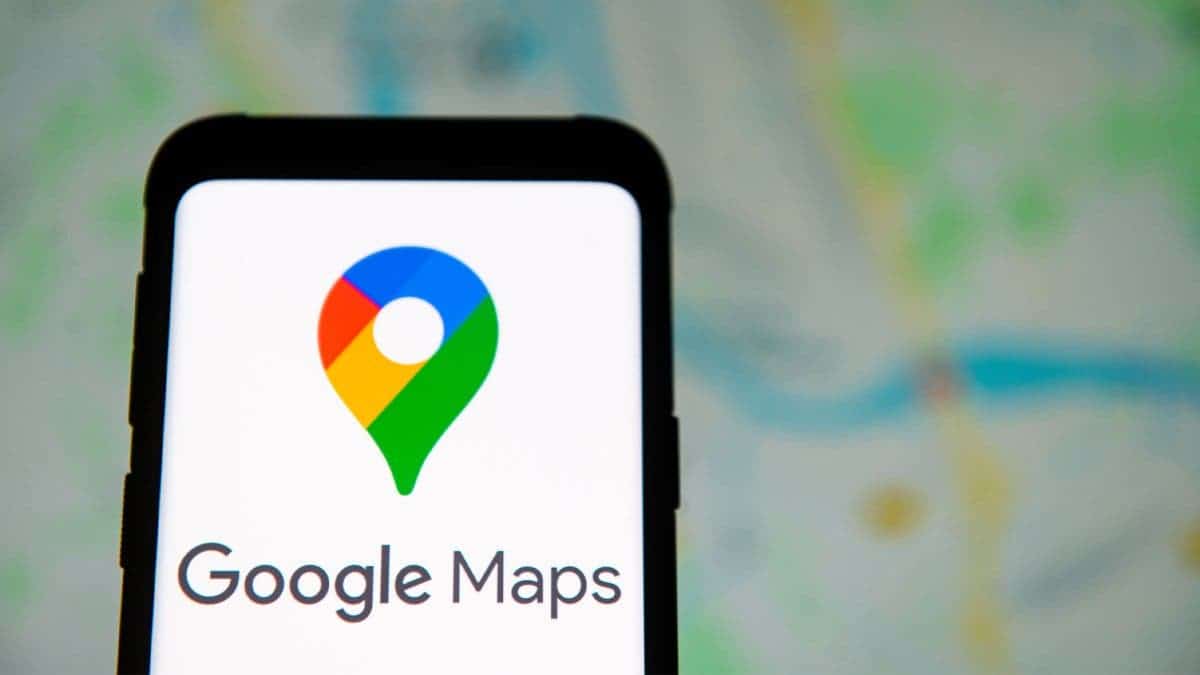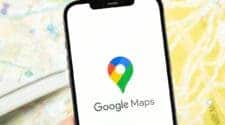In an ongoing effort to streamline its application portfolio, Google is making strategic adjustments that involve both the integration of artificial intelligence (AI) features and the removal of underutilized services. This trend is evident in the recent introduction of AI elements within Google Messages, exemplified by the inclusion of the Gemini large language model, and the upcoming discontinuation of Google’s VPN service. Similarly, Google Maps chat, a service that facilitated direct communication between users and businesses, is slated for retirement.
The Demise of Google Maps Chat: A Communication Shift Within the Super App
From Humble Beginnings to Super App Status
Google Maps has undergone a remarkable evolution, transforming from a simple map application to a multifaceted “super app” that is virtually indispensable on Android devices. Its functionalities extend far beyond basic navigation, encompassing real-time location tracking, route planning incorporating various modes of public transportation, and the exploration of potential dining destinations. Importantly, the 2019 introduction of chat functionality within Google Maps provided a convenient channel for direct communication between users and businesses.
A Short-Lived Experiment: Google and Instant Messaging
The upcoming demise of Google Maps chat underscores a recurring challenge for Google in the realm of instant messaging. The company has struggled to maintain a consistent and successful strategy within this competitive landscape. Past casualties include prominent platforms like Hangouts, now residing in the “Google graveyard,” and less well-known initiatives like RCS messaging, which has yet to achieve widespread public recognition. Google Maps chat represents another chapter in this ongoing narrative of failed attempts.
The Disappearance of Maps Chat and its Impact
The ability to connect directly with businesses via chat within Google Maps proved to be a valuable tool for both users and companies. Users could easily resolve questions, address concerns, and even make reservations directly through this platform. Businesses, on the other hand, benefited from a fast, reliable, and cost-effective method of providing customer support to potential patrons.
However, with the official sunsetting of Google Maps chat on July 31, 2024, businesses will lose this valuable communication channel. The service’s demise will unfold in a phased manner:
- July 15, 2024: Customers will no longer have the ability to initiate new chats with businesses through Google Maps. Existing conversations will remain accessible.
- July 31, 2024: Google Maps chat will be completely unavailable for both initiating and accessing existing conversations.
- August 30, 2024: Business access to all chat logs will be permanently terminated.
Moving Forward: Data Preservation and Alternative Strategies
Businesses that previously relied on Google Maps chat are advised to take advantage of the remaining window of opportunity and utilize Google Takeout to download all chat history before August 30, 2024. This proactive approach will ensure the preservation of valuable customer interactions. While the chat functionality disappears, other contact information such as phone numbers and email addresses will remain accessible within Google Maps business profiles.
The Underlying Reasons for Google’s Decision: Speculation and Potential Explanations
The specific reasons behind Google’s decision to remove Google Maps chat remain unclear. However, several potential explanations can be considered:
- Low Adoption Rate: It is possible that the chat feature failed to attract a significant user base, rendering it an underutilized service within the Google Maps ecosystem.
- Focus on Alternative Communication Channels: Google may be strategically shifting its focus towards promoting other communication channels within its suite of products, such as Google My Business messaging or third-party solutions.
- Integration with AI-powered Assistant Features: The removal of Google Maps chat might pave the way for the integration of AI-powered virtual assistants, potentially offering a more streamlined and automated approach to customer support within the Maps environment.

Looking Ahead: The Future of Communication Within Google Maps
The discontinuation of Google Maps chat signifies a shift in Google’s strategy regarding communication functionalities within the super app. While the specific direction remains unconfirmed, it is likely that Google will explore alternative solutions that leverage its strengths in AI and integrate seamlessly with the broader Google ecosystem. Businesses currently utilizing Google Maps chat are advised to develop alternative communication strategies moving forward. And users should remain aware of potential updates and changes within the Google Maps environment.
The Evolving Landscape of Super Apps and User Expectations
The case of Google Maps chat highlights the dynamic nature of super apps. Developers are constantly evaluating and refining functionalities to optimize user experience and cater to evolving needs. The need for effective and convenient communication channels within super apps is an undeniable user expectation. And it will be interesting to observe how Google adapts to meet this demand in the future iterations of Google Maps.
The Broader Implications of Google’s Move: Impact on Businesses and User Experience
The sunsetting of Google Maps chat carries implications beyond the immediate loss of a communication channel. Here’s a deeper look at the potential consequences for various stakeholders:
Impact on Businesses:
- Increased Customer Service Workload. Businesses that heavily relied on Google Maps chat for customer support may face an influx of inquiries through alternative channels. Potentially straining existing resources. This necessitates proactive measures to streamline workflows and potentially increase staffing for customer service functions.
- Loss of Direct Customer Engagement: Direct chat interactions fostered a sense of immediacy and personalization. Businesses may need to find alternative ways to replicate this level of engagement, potentially through phone support, social media interaction, or the implementation of live chat features on their websites.
- Data Fragmentation and Customer Journey Disruption: Losing access to past chat logs in August 2024 could disrupt businesses’ understanding of customer journeys. Implementing a centralized customer relationship management (CRM) system can help mitigate data fragmentation and ensure a more holistic view of customer interactions.
Impact on User Experience:
- Discovery of Alternative Communication Channels: Users accustomed to the convenience of in-app chat may need to adjust their habits and explore alternative methods of contacting businesses within Google Maps. This could involve increased reliance on phone calls, emails, or navigating to business websites to access separate chat features.
- Potential for Friction and Frustration: The transition away from Google Maps chat could lead to initial user frustration, especially for those unfamiliar with alternative communication methods. Clear and concise in-app notifications outlining the changes and directing users to alternative options can help alleviate this frustration.
- Uncertain Future of Integrated Communication. The removal of Google Maps chat leaves a question mark regarding future communication functionalities within the app. Users may need to adapt to potentially new approaches. Such as AI-powered chatbots or voice-based interactions, depending on Google’s future strategy.
The Role of AI and the Potential for a More Evolved Communication Experience
Google’s emphasis on integrating AI across its products suggests a possible explanation for the demise of Google Maps chat. Here’s how AI might reshape communication within the app:
- AI-powered Chatbots: Google could introduce chatbots within Google Maps, leveraging AI to provide basic customer support and answer frequently asked questions. This could streamline the initial stages of customer inquiries, freeing up human agents to handle more complex issues.
- Voice Assistant Integration: Expanding the capabilities of Google Assistant within Google Maps could offer a voice-based communication channel for users. This would allow for hands-free interaction, potentially improving accessibility for users on the go.
- Sentiment Analysis and Personalized Support: Integrating AI with user interactions could enable analysis of sentiment and user behavior within chat conversations. This data could be used to personalize future interactions and provide more targeted support to users.
The Path Forward: Collaboration and a User-Centric Approach
The future of communication within Google Maps hinges on Google’s ability to collaborate effectively with businesses and prioritize user experience. Here are some key considerations:
- Open Communication with Businesses: Providing businesses with clear and timely information regarding the changes to Google Maps chat and outlining alternative communication options can ensure a smoother transition.
- User Education and Awareness: Google can leverage in-app notifications and educational resources to inform users about the discontinuation of Google Maps chat and guide them towards alternative communication methods.
- Prioritizing User Needs: The introduction of any new communication features within Google Maps should be centered on user needs and preferences. User feedback mechanisms and A/B testing can play a crucial role in optimizing user experience for future communication functionalities.
So, the removal of Google Maps chat signifies a turning point in the evolution of this super app. The future of communication within Google Maps is uncertain, but Google’s decisions will significantly impact businesses and users. By prioritizing open communication, user education, and a user-centric approach, Google can navigate this transition effectively. Ensuring communication within Google Maps remains efficient, convenient, and beneficial for all stakeholders.





